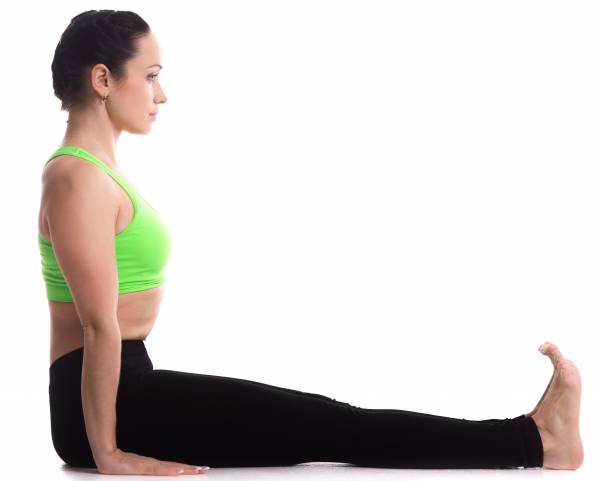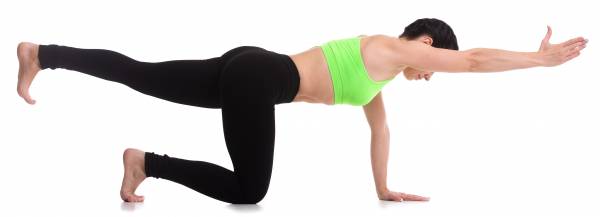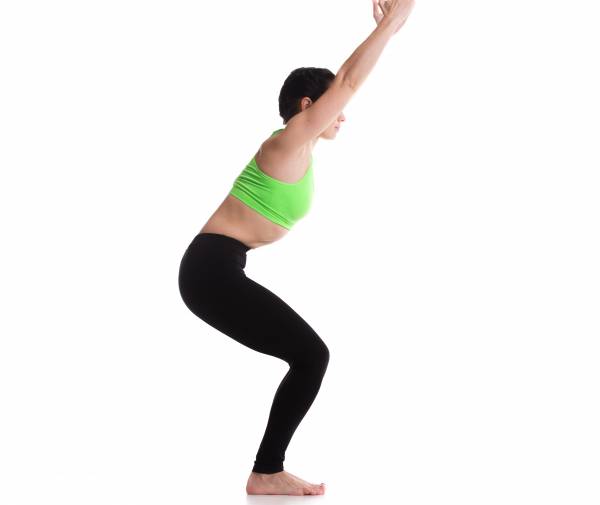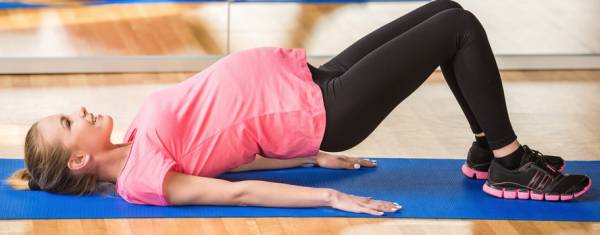I hear pregnant women make statements like this frequently:
“I’ve kept up with [insert type of exercise here] through my whole pregnancy, but my [insert body part here] is killing me. Why is this happening? Do I need to stop?”
Although I’m not pointing fingers at any one type of exercise, it’s usually some kind of high-impact workout like running or box jumps for time. And the body part is usually somewhere in the vicinity of the low back or pelvic girdle.
Sometimes my recommendation is simple: “Stop doing that.” I know you don’t want to hear that, though. You feel good in the middle of a WOD or on mile five of your daily run. But how do you feel the day after? Is it worth it?
Weighing the Costs
For some people, the answer is yes. But that’s not the case for everyone. I know this next sentence might not make me popular, but here it is. Sometimes, the best answer is to take a break from the activity that’s causing problems during pregnancy.
This was my experience with running while pregnant with my third child. I planned to run a half marathon at 25 weeks. But after twenty weeks of running, I had had enough. I was dealing with some problems I had always heard about but never experienced, namely:
- My low back was screaming at me.
- I had horrible pelvic girdle pain after running.
- There was a lot of – how do I put it? Downward pressure. Too much downward pressure. Okay, I’ll just say it: stress urinary incontinence. There.
The bad news is, if your activity of choice is causing one or all of these three symptoms, it’s probably not going to get any better until after your pregnancy.
But chances are, if you’re really in love with your activity (and you probably are if you’re still doing it), you’re not going to want to quit. So here are a few solutions for these common problems.
1. Back Pain: Focus on Alignment
According to a study published in The Indian Journal of Occupational Therapy, lower back pain in pregnancy is related to the following four causes:
- The baby puts pressure on the lumbosacral nerves.
- The anterior abdominal wall muscles function less efficiently, leading to spinal strain.
- Increased lordosis in the low back due to the increased size of the uterus.
- Laxity of ligaments related to increased relaxin.
The best way to address these issues is to work on your alignment – not just during exercise, but during everyday life. Because if you’re walking around with poor alignment, it doesn’t really matter how much yoga or lower back strengthening exercises you do.
My third pregnancy was pretty much low back pain-free, with the exception of that period of time when I was running, due to making simple alignment adjustments. The most important adjustment I made was something I learned in an alignment workshop with biomechanist Katy Bowman. You can watch Katy fixing my rib thrusting habit in the video below:
Me with alignment expert Katy Bowman during the second trimester of my pregnancy.
If you try this at home (and I recommend you do), you’ll notice your core muscles feel more active with your ribs drawn in. By not allowing your belly to draw your ribs forward, you will build stability in the deep core musculature and prevent excessive stress on the lower back. This simple alignment cue was a game-changer for me.
2. Pelvic Girdle Pain: Stabilize
Pelvic girdle pain (PGP) is a bit of a blanket term used to describe severe pain in the pelvic and hip area. I’ve known women who have been completely debilitated by pelvic girdle pain during and after pregnancy. Although the exact causes remain a bit mysterious, recent research has shed some light on ways to cope.
A fascinating 2004 study published in The Spine Journal studied the effects of stabilization exercises on PGP. One group received physical therapy without any exercise intervention. The other group received the normal physical therapy interventions (heat/cold, massage), but did not do any stabilization exercises.
The exercise group outperformed the no-exercise group by a long shot. They reported lower pain intensity and higher quality of life, and performed better on physical tests. Additionally, they reported these effects up to one year postpartum. So when it comes to dealing with PGP, stabilization is the name of the game.
“[I]f you’re dealing with PGP, skip the heavy squats and opt for stabilizing exercises that will keep your joints healthy and strong.”
Unfortunately, activities like jumping, running, and heavy squatting don’t exactly promote stability. So if you’re dealing with PGP, skip the heavy squats and opt for stabilizing exercises that will keep your joints healthy and strong. Or if you want to keep doing squats, at least add in some stabilization exercises to your daily routine.
For example, try the following sequence every day, preferably in the morning and evening. Do it for three rounds each time and see if you notice any beneficial effect.
- Staff pose – 30 seconds, breathing deeply, focus on elongation of the spine
- Sunbird – 5 reps per side, slow and controlled with deep breathing
- Chair with block between knees – hold for 5 deep breaths
- Cat/cow x 10 breaths
- Clam exercise x 5 reps per side
- Hip bridges with block between knees x 10
- Modified legs up the wall – 3 minutes

Staff Pose

Sunbird

Chair Pose – place a yoga block between your knees

Hip bridges – place a yoga block between your knees
3. Stress Urinary Incontinence: Decrease Impact
In my experience, the best way to deal with stress urinary incontinence during pregnancy is to minimize impact. It’s just physics. Bigger belly = more stress = more leakage. And even in non-pregnant people, high-impact activities are more likely to cause stress urinary incontinence, as noted in a recent research review on athletes and urinary incontinence:
Gymnastics was the sport which presented the most urine leaking (67%), followed by basketball (66%), tennis (50%), hockey (42%); trekking (29%); swimming (10%); volleyball (9%); softball (6%) and golf (0%). The activities which provided the most urine loss were those which included jumps, high-impact landing and running. Jumping with legs open was a complaint in 30% of the athletes; followed by jumping with legs together (28%). The author believes that women have a ‘continence threshold’ which corresponds to the amount and time which the perineum muscles can stand efforts and repetitive impacts.
Later in this article, the author noted that stress urinary incontinence should not deter people from practicing their sport. In the case of pregnancy, I usually recommend avoiding activities that cause serious stress urinary incontinence.
Again, this is a conservative approach. But unless you’re being paid to do box jumps or run marathons, I don’t see why you would bother with the leakage and also risk developing more serious issues like pelvic organ prolapse.
Don’t Be Afraid to Just Stop
A lot of women I talk to are concerned that if they stop doing their favorite activity during pregnancy, they will undo all the hard work they’ve done and never be successful at their sport again. I can assure you, if you were serious about your activity before pregnancy, you will most likely find yourself craving it when your body has recovered, even if you do take a break.
And who knows – maybe taking time off will lead you to find a new activity you love just as much. Time to work on your golf swing?
More Like This:
- Load Bearing 101: Lessons From Katy Bowman in How to Hold Your Own Weight
- 6 Exercises for Rebuilding Your Core After Pregnancy
- 2 Myths About Women and Weight Lifting Debunked
- New on Breaking Muscle Today
Photos courtesy of Shutterstock.






